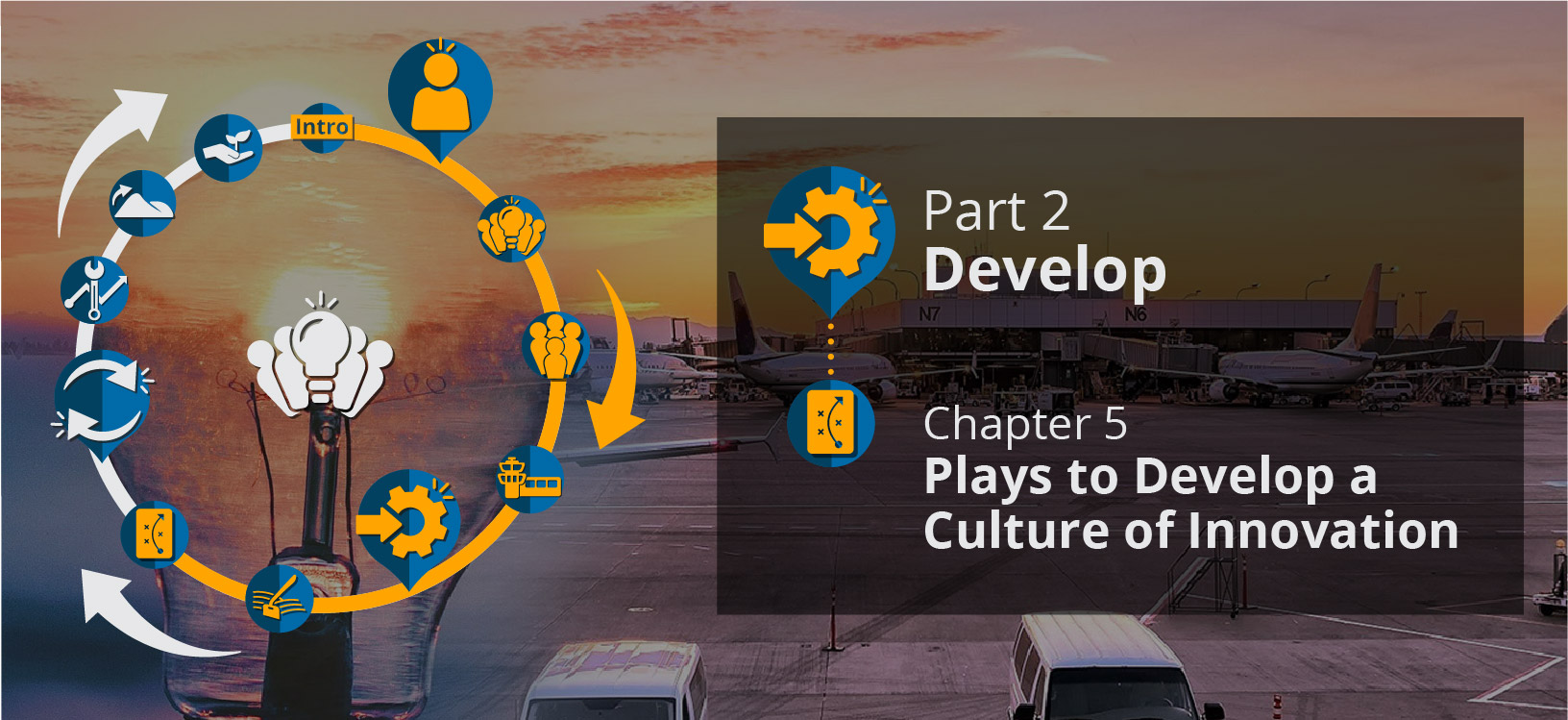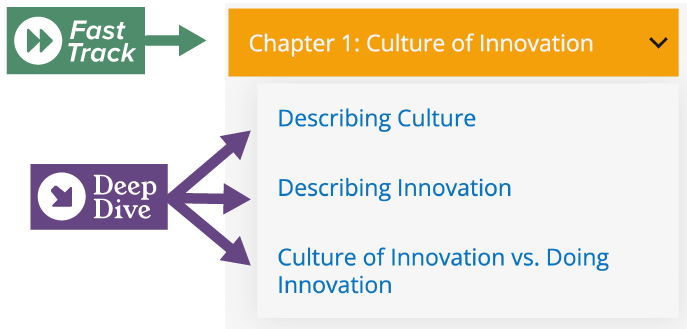

This is a Deep Dive page. Select the chapter for the Fast Track
Play 14: Prioritize an Exceptional, Comprehensive Team (Strategy & Policy)
Diverse perspectives can lead to innovative results, which lead to more success. Innovative leaders who embrace the perspectives and life experiences of their team members are able to capture unique and fresh ideas to support a culture of innovation.
An exceptional team emerges when a leader provides opportunities for every member of the team to have their voice heard when approaching a problem or challenge. Their collective experiences and expertise provide a rich tapestry that staves off stale ideas and the risk of repeating the same old processes. This approach, combined with an eye toward diversifying the organizational team makeup, helps an airport set itself up for success. It enables staff to bring all they have to the table without hiding their valuable input, and it results in higher degrees of employee engagement, productivity, and innovation.
Capture the Benefits of a Diverse Organization
Innovative leaders
-
- Stay in touch. Routinely examine the composition of your organization to ensure it has the right talent, diverse skill sets, the drive to meet daily challenges of the environment, and a sense of solidarity with the community it represents. This awareness provides leaders with the opportunity to confirm an open setting or environment for employees to interact. Some may try to label this as an exercise in diversity, equity, and inclusion, but it goes beyond a named initiative like ”DEI.” This is about eliminating negative biases to grow a culture of innovation-all in support of an energetic and dynamic airport ecosystem that serves and dazzles its customers.
-
- Leaders who believe this is not their role (i.e., those who relegate it to HR) will quickly extinguish the flames of innovation. One way to stay in touch is to hold meetings with a robust cross section of the organization in a focus-group style. Providing such settings validates the input and feedback of your team members and helps to break down any misconceptions. Employee engagement surveys are also a great way to capture additional insights and to identify progress and opportunities for improvement. Just remember to research and follow best practices in conducting surveys to ensure those surveyed share honest feedback.
-
- Stay in touch. Routinely examine the composition of your organization to ensure it has the right talent, diverse skill sets, the drive to meet daily challenges of the environment, and a sense of solidarity with the community it represents. This awareness provides leaders with the opportunity to confirm an open setting or environment for employees to interact. Some may try to label this as an exercise in diversity, equity, and inclusion, but it goes beyond a named initiative like ”DEI.” This is about eliminating negative biases to grow a culture of innovation-all in support of an energetic and dynamic airport ecosystem that serves and dazzles its customers.
-
- Mitigate biases. Clearly define goals and expected behaviors to your organization. Clarity about acceptable and unacceptable actions will safeguard against any inherent biases. Training initiatives around understanding and appreciating different perspectives in the organization can also position leaders and employees for success by avoiding assumptions and incorrect expectations. Once employees know and understand potential differences, they will be more likely to appreciate and accept their fellow colleagues.
Remain Vigilant of Potential Challenges in a Diverse Organization
Prioritize effectively and remain transparent. Not all ideas are feasible, and even some feasible ideas may need to take a backseat to those that offer more value to the organization. Organizations that try to please everyone can find themselves paralyzed in decision-making; but organizations that throw away any idea that does not meet their high standards run the risk of alienating team members. The right approach lies in setting clear standards and prioritization processes and keeping things transparent. Some organizations and teams prepare a checklist of factors by which every new idea is evaluated. This helps to separate good ideas from great ones on an even playing field; and when done transparently, it demonstrates to each team member why their idea may not yet be chosen. It also provides them with lessons learned to make their next idea even better.
Promote a sense of unity. Although different perspectives and experiences can offer tremendous value in solving problems, when left unchecked, they can lead to dissension and conflict. For example, it is vital for everyone in the organization to be unified in support of the strategic priorities and objectives of the airport as a whole. This should translate to the goals of each business function, each team within a function, and each individual within a team. When someone overtly takes issue with these core principles, they can start to take on the negative personas described in Personas in Chapter 2.
A good leader will keep an eye out for this, seeking first to understand the root of the problem. It may be that a team member needs to better understand why the goals are there in the first place. A careful, understanding approach can win respect. However, it may be that something does need to change. It may once again be necessary to gather feedback from the various perspectives in the organization and update priorities to reflect the realities and needs of the airport. (See Play 11: Develop a Unifying Strategic Plan for more on this.)


